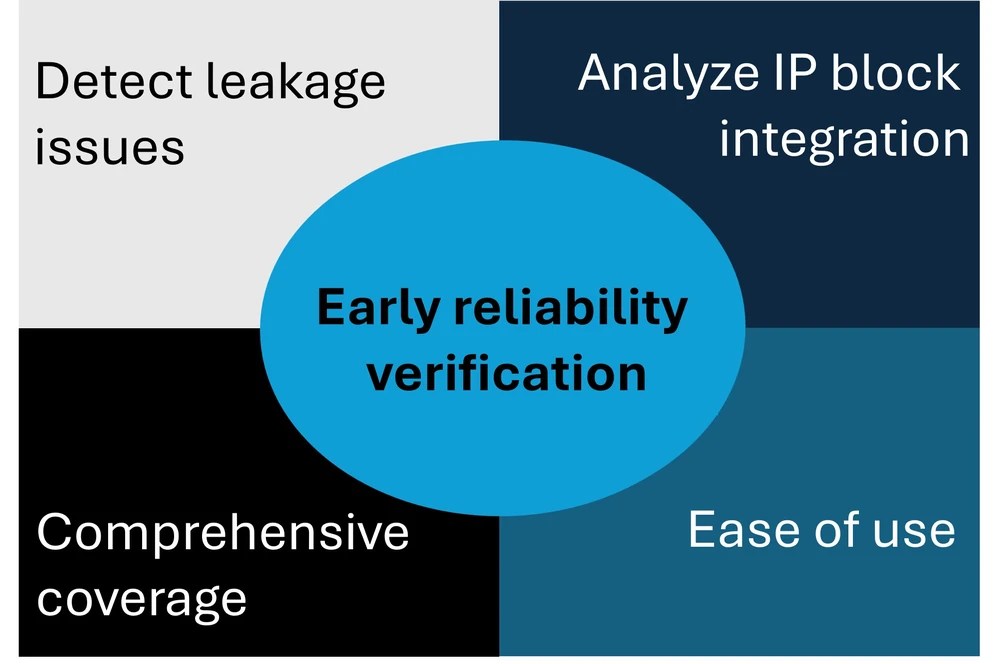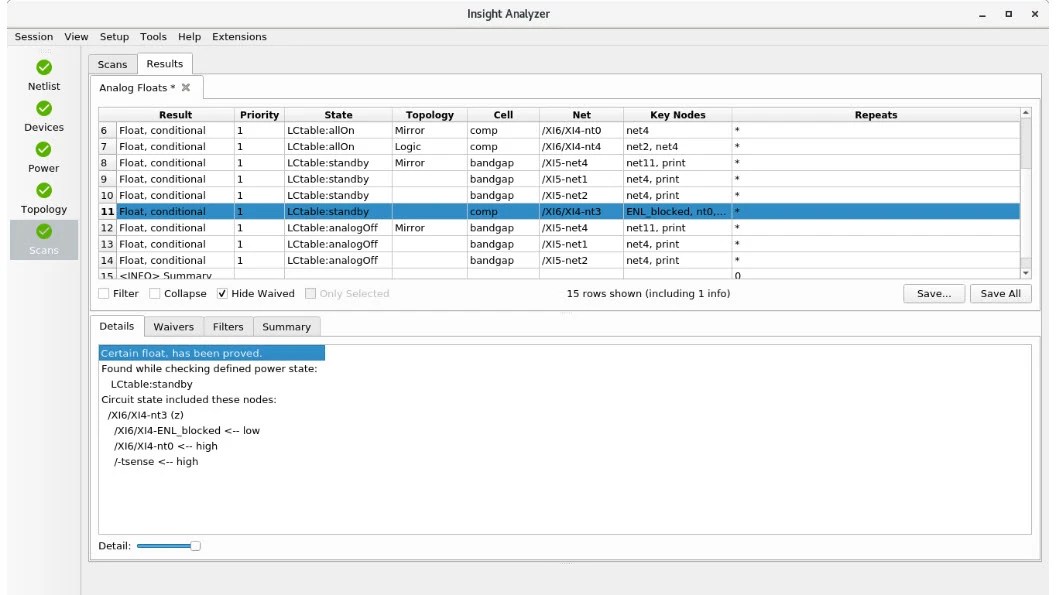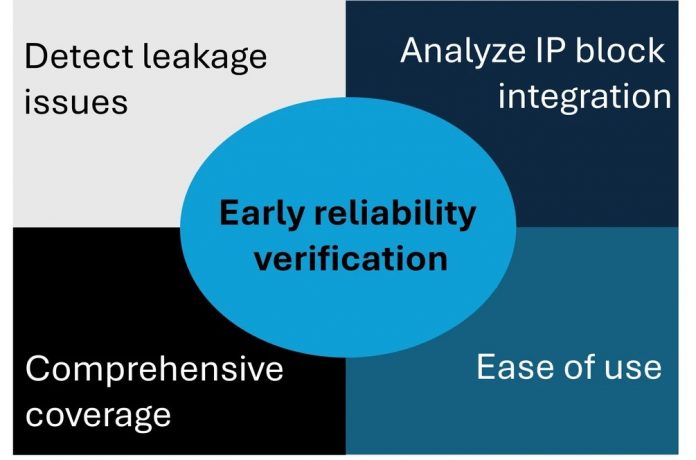As the semiconductor industry continues its relentless march towards smaller process nodes and more complex integrated circuits (ICs), the challenge of ensuring reliability has become increasingly difficult. Industry analysts predict a significant increase in demand for semiconductor reliability verification as electromigration and IR drop analysis become critical parts of the overall design verification process.
The stakes are high – unreliable ICs can lead to costly failures, damaged reputations, and even safety risks. The average cost of a single semiconductor field failure can be very expensive. With the proliferation of mission-critical applications in areas like automotive, healthcare, and aerospace, the need for robust reliability verification has never been more pressing.
Reliability challenges in the modern IC design landscape
At the heart of the reliability challenge lies the ever-increasing complexity of IC designs. As designers strive to pack more functionality into smaller form factors, they must grapple with a host of issues that can impact reliability, from leakage and power management to the integration of disparate IP blocks.
One of the most significant reliability concerns is the management of leakage, which can have a profound impact on a device’s performance, power efficiency, and long-term stability. Leakage can manifest in various forms, including parasitic leakage, analog gate leakage, and digital gate leakage, and it’s a problem that must be addressed with great care.
Leakage is a fundamental function of the transistor devices that are used in the design and the process node. Many design techniques can be employed to significantly improve design leakage, but these require careful coordination and verification of IP blocks, how they are used, and how they interact.
Beyond leakage, the integration of multiple IP blocks from various sources, both internal and external, can also pose significant reliability challenges. Mismatches in communication protocols, power states, and voltage levels can all lead to integration issues that are difficult to detect and resolve.
The shift-left approach: Addressing reliability early in the design process
To tackle these reliability challenges, IC designers are increasingly embracing a “shift-left” mindset, where reliability verification tools are integrated into the early stages of the design process. This approach stands in contrast to the traditional approach, where reliability checks are often left until the later stages of the design cycle.
Employing a shift-left mindset, where reliability verification tools are used early to automate and validate design elements in the design and implementation, facilitates timely identification of what may become future design inefficiencies or integration challenges.
By catching potential reliability issues early on, designers can address them more efficiently and effectively, reducing the need for costly and time-consuming rework. This not only saves valuable resources but also helps to ensure that the final product meets the highest standards of quality and reliability.
The capabilities required for effective reliability verification
To enable this shift-left approach, designers need access to powerful reliability verification tools that can identify and address a wide range of potential issues. These tools must be capable of:
- Detecting leakage issues: Accurately identifying the risk of leakage between power domains, as well as other circuit reliability concerns, is crucial. This requires advanced algorithms that can go beyond traditional electrical rule checks (ERCs) and simulation-based approaches.
- Analyzing IP block integration: Verifying the interoperability of IP blocks, including power states, voltage levels, and communication protocols, is essential to ensuring seamless integration and reliable system-level performance.
- Providing comprehensive coverage: The reliability verification tools must be able to identify a wide range of potential issues, from subtle circuit changes that can impact reliability to complex interactions between multiple power domains.
- Offering ease of use: For the shift-left approach to be effective, the reliability verification tools must be user-friendly and accessible to designers, allowing them to quickly identify and address problems without getting bogged down in complex workflows.

Fig. 1: Requirements of a reliability verification tool to support a shift-left approach.
A powerful solution for reliability verification
Siemens’ Insight Analyzer is a tool that addresses these critical requirements, empowering IC designers to tackle reliability challenges head-on in the early stages of the design process.

Fig. 2: The Insight Analyzer tool’s graphical user interface makes it easy to find and identify many reliability issues.
Insight Analyzer is designed to quickly and accurately identify a wide range of reliability issues, including leakage risks, without the need for extensive simulation. By using a form of state-based analysis that goes beyond traditional ERC tools, the tool can detect subtle circuit changes that can have a significant impact on reliability.
In addition to its advanced analysis capabilities, Insight Analyzer also offers a user-friendly interface that makes it accessible to designers of all skill levels. This ease of use is a key factor in enabling the shift-left approach, as it allows designers to quickly integrate reliability verification into their existing workflows.
A case study in reliability verification
The power of Insight Analyzer has been demonstrated in real-world applications, such as the experience of STMicroelectronics, a leading semiconductor manufacturer.
In a paper presented at the Siemens EDA User2User conference, the STMicroelectronics team shared their journey in detecting and addressing high impedance (HiZ) net issues in their designs. The team recognized that while HiZ nets are often seen as problematic, the reality is more nuanced, and they needed a tool that could help them better understand the context and degree of concern.
Insight Analyzer played a crucial role in this process, allowing the STMicroelectronics team to increase the coverage of their verification efforts. The team praised the tool’s ease of use, noting that their users were able to become operational within just a few hours of first using it.
“High-voltage, high-power, high-density designs are a continuous challenge for the actual tools and methodologies, and that Insight Analyzer allows them to increase the coverage of their verification,” the STMicroelectronics team said.
The path forward: Embracing reliability verification in the shift-left approach
As the semiconductor industry continues to push the boundaries of what’s possible in IC design, the need for robust reliability verification tools has never been greater. By embracing the shift-left mindset and integrating these critical checks into the early stages of the design process, designers can ensure that their products meet the highest standards of quality and reliability.
Tools like Siemens’ Insight Analyzer are at the forefront of this revolution, providing designers with the capabilities they need to tackle leakage issues, analyze IP block integration, and identify a wide range of potential reliability concerns. By complementing traditional simulation approaches and offering advanced analysis capabilities, these tools are helping to transform the way designers approach reliability verification.
As design complexity evolves and the quest for minimizing power continues, the importance of reliability verification with a focus on leakage will only grow. By staying ahead of the curve and embracing the shift-left approach, IC designers can position themselves for success, delivering products that are not only cutting-edge in performance but also rock-solid in reliability.

